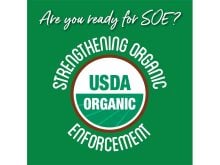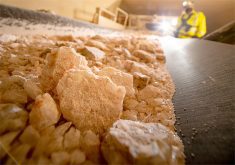UPDATED: March 4, 2025 – 0845 CST – DENVER, Colo. – When members of the Association of Equipment Manufacturers speak to policy makers in Washington, D.C., or at an agricultural trade show in Denver, the message is the same — tariffs are a terrible idea.
They will hurt American companies that make tractors and other agricultural equipment.
Follow all our coverage of the tariffs situation here
Read Also

New coal mine proposal met with old concerns
A smaller version of the previously rejected Grassy Mountain coal mine project in Crowsnest Pass is back on the table, and the Livingstone Landowners Group continues to voice concerns about the environmental risks.
“Our position is very simple. Tariffs are taxes. They’re taxes on American manufacturers. They’re taxes on American farmers…. This is no way to bolster U.S. manufacturing,” said Kip Eideberg, vice-president of government and industry relations with the AEM.
“They will drive up the cost of making equipment in the United States. They will make us less competitive in the global marketplace.”
The association represents manufacturers of agricultural and construction equipment, including companies like John Deere and Agco.
For lobbyists who represent equipment manufacturing, and many other industries, changing minds in Washington isn’t easy at the moment.
During a press conference at the Commodity Classic in Denver, the AEM shared data on the trade in agricultural and construction equipment between Canada and the U.S.

The United States exports about US$10 billion in finished machines, parts and components to Canada. In return, Canada sends $3.5 billion to the U.S.
As a result, America has a $6.5 billion trade surplus in farm and construction equipment.
That should be a powerful nugget of data for AEM.
However, the association is struggling, like many industries, to convince U.S. president Donald Trump’s administration, that free trade is beneficial for the U.S.
Still, Eideberg continues to talk to powerful people in America’s government about tariffs. At the Commodity Classic, he walked the trade show floor with U.S. agriculture secretary Brooke Rollins on March 2.
His message to her? Tariffs on Canada and other countries are damaging for American farmers.
“These tariffs are going to make all of this great (farm) equipment on display here more expensive. That will lead to fewer American jobs.”
Rollins, who spoke to the media at the Commodity Classic, said she’s listening to such messages. She has only been in the role of ag secretary for a couple of weeks, but she has met with hundreds of farmers.
Many of them are worried about tariffs and the consequences for America’s ag industry, she said.
“That is my role,” Rollins said.
“To ensure that those concerns are heard, effectively.”
Later in March, the AEM plans to publish a report on various tariff scenarios and what they could mean for equipment manufacturers in America and Canada.
The threat of tariffs has already had an impact because of the uncertain business environment, Eideberg said.
“Talking to company CEOs, they are most definitely delaying capital investments and delaying hiring…. I am certain, from talking to executives at the show… that there will be a lot of jobs not created.”


















